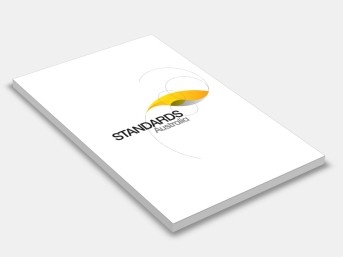AS/NZS 2269.0:2012 Plywood - Structural, Part 0: Specifications
Standards Australia/Standards New Zealand
Supersedes: AS/NZS 2269.0:2008 Plywood - Structural, Part 0: Specifications
Draft Designation: DR AS/NZS 2269.0This Standard incorporates Amendment No. 1 (August 2015). The changes required by the Amendment are indicated in the text by a marginal bar and amendment number against the clause, note, table, figure or part thereof affected.
The objective of this Standard is to provide minimum performance requirements and specifications for the manufacture and application of structural plywood, acceptable to users, specifiers, manufacturers, and building authorities in Australia and New Zealand.
The objective of this revision is to align this Standard with the latest revision of AS 1720.1, Timber structures, Part 1: Design methods and AS/NZS 4063.2, Characterization of structural timber, Part 2: Determination of characteristic values.
Plywood manufactured to this Standard is suitable for use in permanent structures. The plywood may be of either hardwood or softwood veneers, or a combination of both. The quality of veneers is judged in the finished panel.
This edition includes the following changes:
(a) Amendments have been made to characteristic properties listed in Table 4.1.
(b) Two new F-grades, i.e., F4 and F5, have been included to reflect the ongoing changes in resource.
(c) Amendments have been made to the formaldehyde emission classes with the removal of emission classes E2 and E3 and the inclusion of a new lower ‘Super E0’ emission class. This is to reflect marketplace expectations for lower formaldehyde emissions for structural plywood.
This Standard is Part 0 of the AS/NZS 2269 series, Plywood—Structural, which comprises the following parts:
AS/NZS
2269 Plywood—Structural
2269.0 Part 0: Specifications (this Standard)
2269.1 Part 1: Determination of structural properties—Test methods
2269.2 Part 2: Determination of structural properties—Evaluation methods
Five standard veneer qualities, A, S, B, C and D, are prescribed, as follows:
A⎯a high quality appearance grade, suitable for clear finishing.
S⎯an appearance grade, which permits characteristics as a decorative feature.
B⎯an appearance grade suitable for high quality paint finishing.
C⎯a non-appearance grade with a solid surface.
D⎯a non-appearance grade with permitted open characteristics.
The surface grade of the plywood is determined by the quality of the face and back veneers.
Two methods for determining the stress grade for the plywood are described using the following bases:
(i) Mechanical F-grading of plywood panels.
(ii) In-grade testing of plywood panels.
Three formaldehyde emission classes, Super E0, E0, E1, are included.
For the design of structures or elements incorporating the use of plywood specified in this Standard, the structural grades will have characteristic strength and stiffness values as detailed in Table 4.1. These characteristic properties are to be assigned in accordance with the requirements of AS 1720.1, Timber structures, Part 1: Design methods, and NZS 3603, Timber Structures Standard.
This Standard covers the basic structural plywood product. Particular end uses may require additional processing, preservative treatment or surface finishing. Structural plywood that is exposed for a long term to wet or damp conditions or full weather exposure will need preservative treatment in accordance with AS/NZS1604.3, Specification for preservative treatment, Part 3: Plywood. Under these exposure conditions, the surface of the plywood will need adequate protection.
Notes to the text contain information and guidance. They are not an integral part of the Standard.
Statements expressed in mandatory terms in notes to figures are deemed to be requirements of this Standard.
The terms ‘normative’ and ‘informative’ have been used in this Standard to define the application of the appendix to which they apply. A ‘normative’ appendix is an integral part of a Standard, whereas an ‘informative’ appendix is only for information and guidance.
Originated in Australia in part as AS O85-1969. AS O89 first published 1973. AS O85-1969 and AS O89-1973 revised, amalgamated and redesignated as AS 2269-1979. First published in New Zealand as NZS 3614-1971. AS 2269-1979 and NZS 3614:1971 jointly revised and designated as AS/NZS 2269:1994. Third edition 2004. AS/NZS 2269:2004 revised and redesignated as AS/NZS 2269.0:2008. Second edition 2012. Reissued incorporating Amendment No. 1 (August 2015).
This Standard specifies requirements for the manufacture, grading, finishing and branding of structural plywood. Specifications for both stress and surface grades are also provided. The Standard also specifies veneer quality, bond quality, standard lay-up construction, dimensional tolerances, joints, moisture content and characteristic strength and stiffness values for the nominated F-grades.
The following alternative methods for the determination of stress grades for structural plywood are also provided:
(a) Mechanical F-grading of the finished sheet of plywood.
(b) In-grade testing of finished plywood panels.
Five surface grades, based on the veneer quality of the face and back veneers, A, S, B, C and D and one bond quality, Type A bond, are prescribed.
Contents:
Section 1: Scope And General
Section 2: Veneer Quality
Section 3: Manufacturing Requirements
Section 4: Application Of F-Grades And Mechanical Properties To Structural Plywood Panels
Appendix A: Storage And Handling Of Structural Plywood
Appendix B: Section Properties, Second Moment Of Area (Moment Of Inertia) And Section Modulus For Structural Plywood
Appendix C: Method For Mechanically F-Grading Structural Plywood Panels
Appendix D: Information To Be Supplied With Inquiries And Orders
Appendix E: Example Procedures For Continuous Validation Of Structural Properties Of Plywood, Based On Testing Of Bending Stiffness And Strength
Plywood Timber Products.
Australian Building Codes Board; Australian Timber Importers Federation; BRANZ; Building Products Innovation Council; Engineered Wood Products Association of Australasia; Engineers Australia; Scion; Timber Development Association (NSW); Wood Processors Association.
